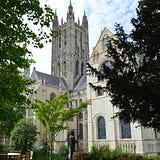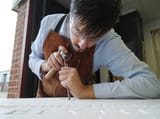Restoring Canterbury Cathedral
Explore the backstage of one most famous holy sites in the world, Canterbury Cathedral. This building has it all!

Explore the backstage of one most famous holy sites in the world, Canterbury Cathedral. Statues, Clocks and Gargoyles this building has it all!
Hi fellow readers, today I want to introduce you to a place dear to me in the city I live in, Canterbury, specifically its millennial Cathedral.
If Google is tricking you, make sure is not Canterbury New Zealand, but the one in England, UK (I love this joke!).
If you have read my “About me page” you probably know that I’m a stonemason and some of my work has been featured during the Lambeth conference in 2022, for the Archbishop of Canterbury, Justin Welby (picture above)!
The cathedral has been a source of inspiration for my art and also a great “non-speaking” teacher for the stonemason training I’m currently undertaking.
That said I was really tempted to explain the full history of this cathedral, but it is long and at times tiresome, so since I had the chance to visit its backstage I thought :
Why not show the exciting part of its restoration, financed by the UK lottery fund ?
let’s do it!
That said, I think is time to dig into this wonderful UNESCO site!
Bell Harry and Clock
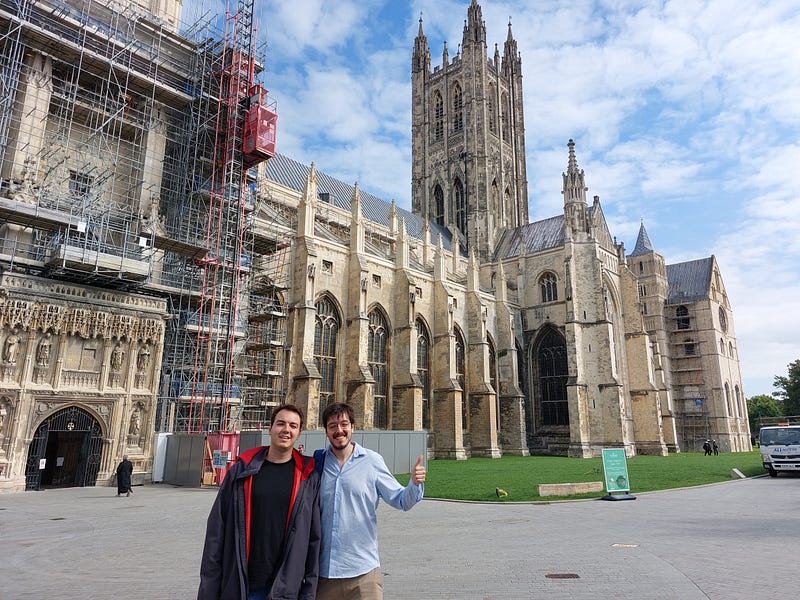
Canterbury Cathedral has over 20 bells.
These bells are found at the top of Bell Harry Tower; with five bells in the North West tower for striking the quarters; Great Dunstan, the Cathedral’s largest bell at over 3,000 kg, striking the hour; and, 14 bells used for change ringing in the South West tower.
The present central tower (just behind myself and my brother in the picture) was designed by the architect John Wastell and completed in 1498. It is known as Bell Harry by virtue of the original bell given in 1288 by Prior Henry of Eastry, to be hung on the roof of the tower as it then stood.
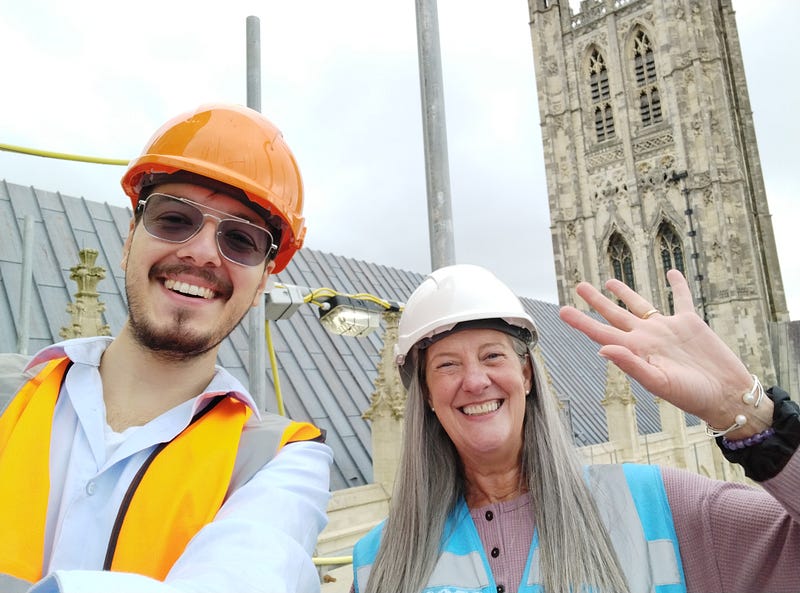
Shadowed by the scaffolding there is also a fantastic clock with Roman numerals.
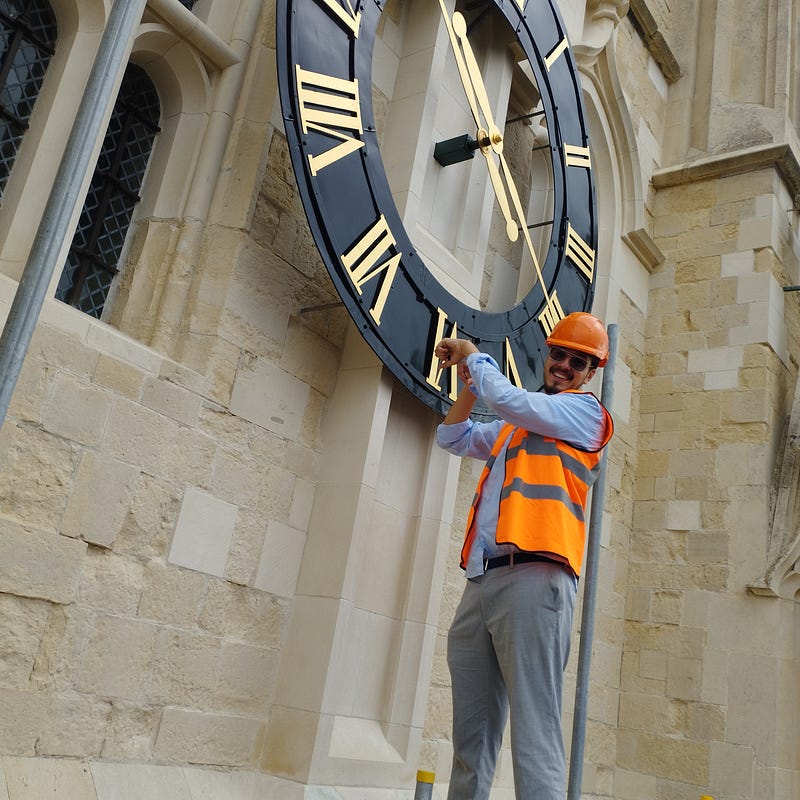
This amazing clock at the top of the cathedral has just undergone restoration.
It is considered “one of the finest examples of workmanship by clock makers G.F. Vale of London”.
Made in 1855, it was converted in the 1980s to be driven by electric motors.
The cost of cleaning the dial was met by The Canterbury Journey project, and the cost of restoring the mechanism by a donation from The Guy and Elinor Meynell Charitable Trust.
After being restored it had to be hung again to the wall on a really windy day, you can imagine how difficult it must’ve been!
Wall and systemic corrections
Passage of time and various calamities took a toll on the cathedral’s structural integrity.
The cathedral endured extensive damage during the English Civil War in the 17th century, and centuries of exposure to the elements led to deterioration. The most devastating blow came during World War II when German bombers targeted Canterbury, causing significant damage to the cathedral. These events necessitated a series of meticulous restoration efforts to preserve this architectural gem.
You might think
“A building made of stones should not move at all”
and that’s what I thought too, the truth is quite the opposite, this structure is constantly moving.
Only some parts are held together by cement, most of the structure has mortar or just pieces of stone interacting with each other.
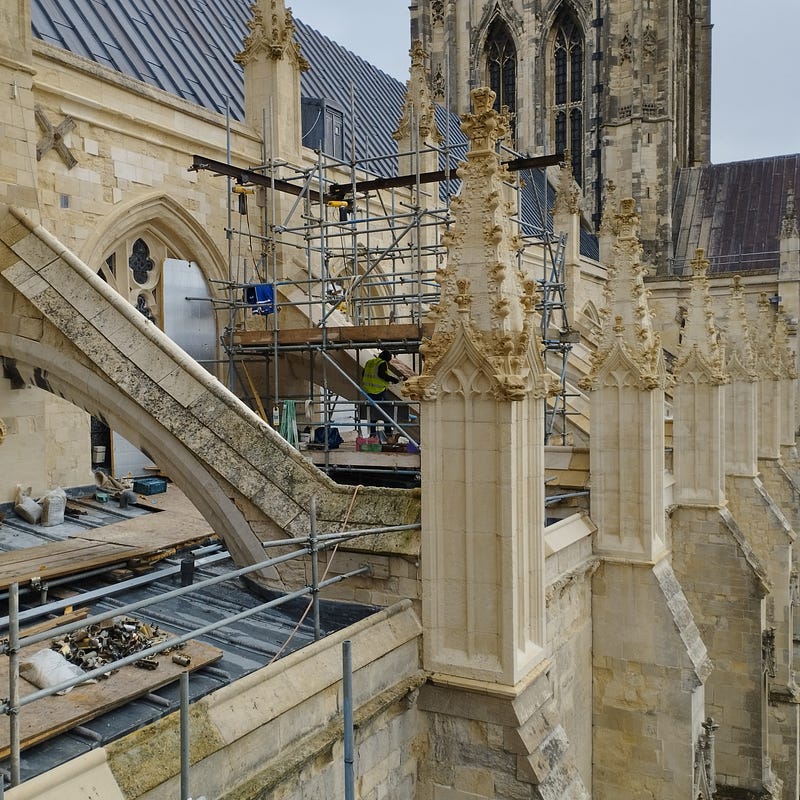
The side walls are now experiencing an inclination of 2°, hence new wall supports had to be put in place like this one.
Most of the work is just copying what’s already there, and replacing every bit of stone that is gone beyond its lifespan. Seems easy? Well it’s not, and a team of more than 80 people constantly works on this.
Replacement Bits
The current restoration project is funded with 6 million from the UK lottery fund, which seems like a lot of money but I firmly believe is not enough for a UNESCO site.
As mentioned earlier, the money was supposed to largely go towards the restoration of the West Front. Unfortunately during inspection of the building, many top decorations were found not properly installed during the 80s, such as the ones below.
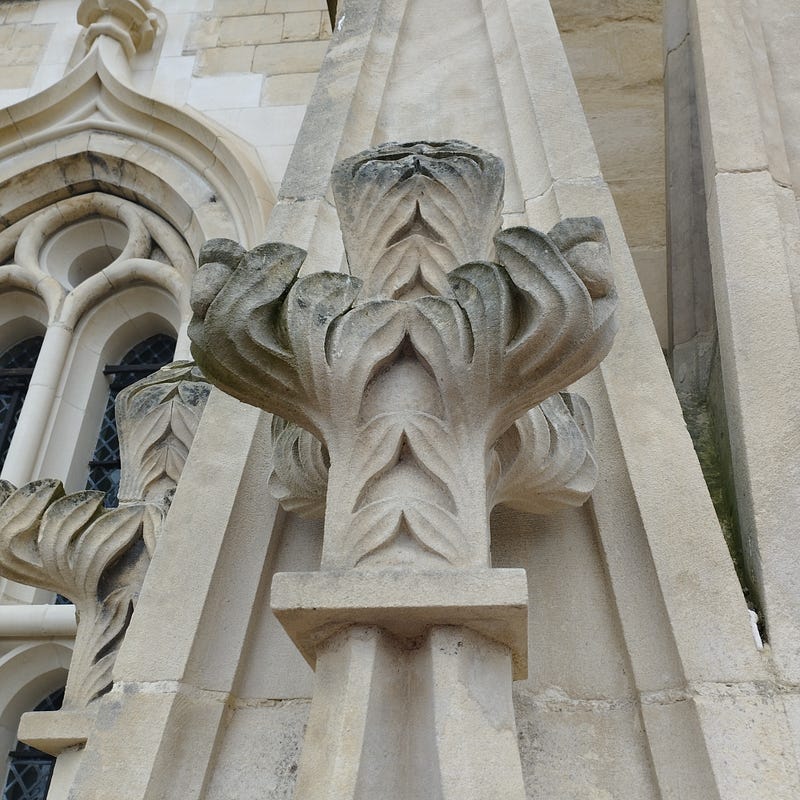
If someone knows the technical terms of these please let me know, as I would love to give a name to these questionable carvings.
They are intricate, without taste and were introduced in 1982 by people who really did not know what conservation meant.
Due to being wobbly, they required immediate fixing or replacement as there are more than 20; also being on such a high spot wind can easily move them and go ehm….. on someone’s head.
On the other side, I don’t mind these other decorative faces, which are meant to be ugly as decoration piece.
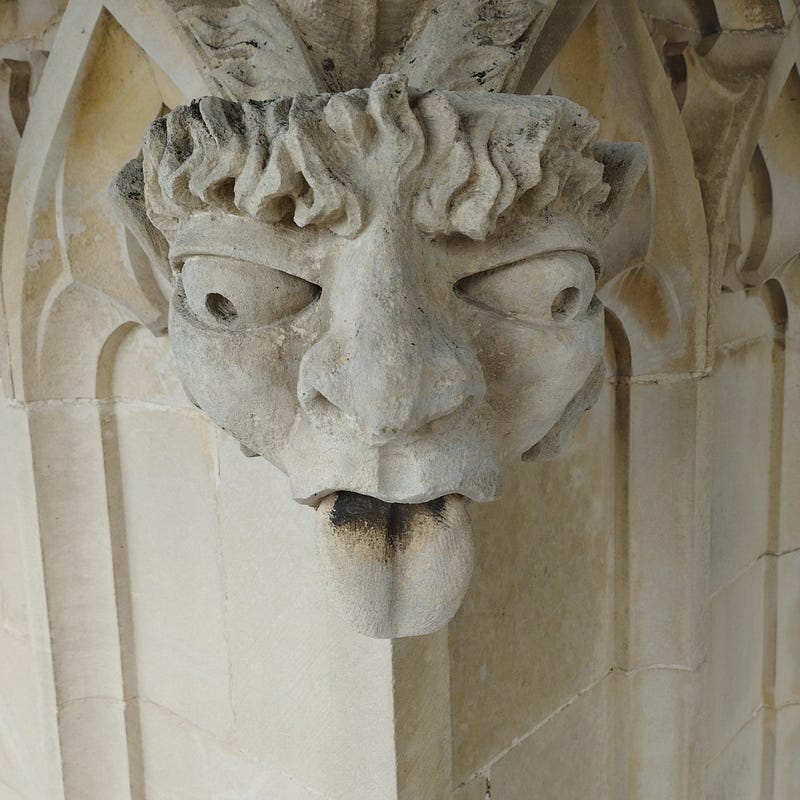
Artistic Considerations and Future of Historic Canterbury
Canterbury Cathedral is constant hard work.
It is built from a mix of English and French limestone. It’s a perfect choice for architectural purposes, although every 80 years or so a piece needs to be taken off and replaced a bit like Legos.
That’s not all though, artistic sculptures need help too and careful placement needs to be planned otherwise issues like this arise (see below).
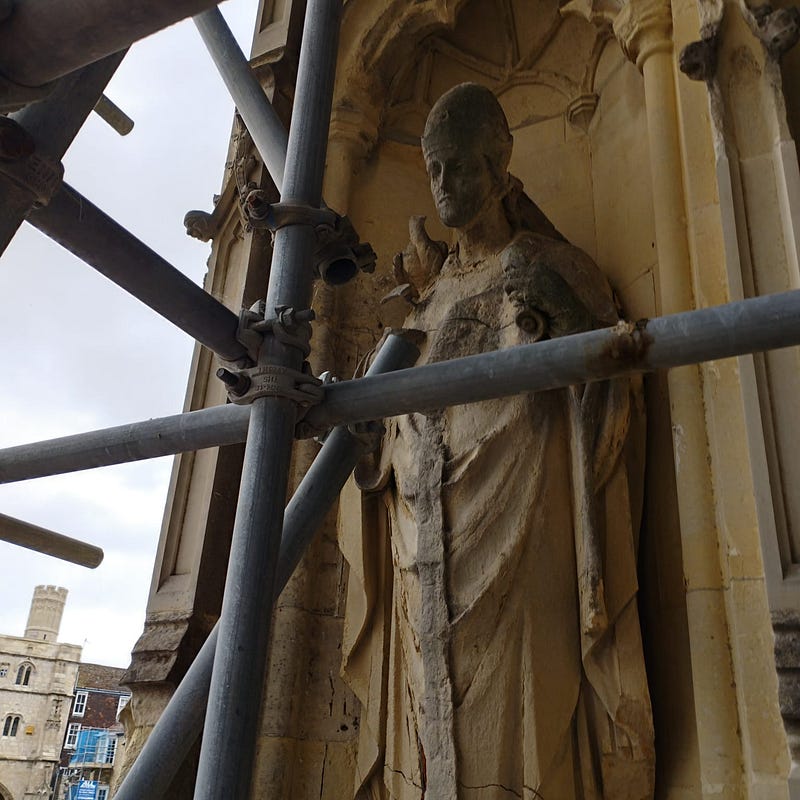
This statue, representing Gregory the Great, has been sculpted in the 80s by a Belgian studio.
Great work, but look at the placement, part of the sculpture has been put in a position that can easily be touched by the rain and the result of 45 years of rain is quite evident in the erosion, shown in the picture above.
On my side I’m fighting Canterbury Council to stop future projects in the town that will ruin the aestethics of the old town, trying to convince them to spend the money on the Cathedral instead.
I am Italian, but most of my working life has been spent here and I feel closely connected to this region, as it is where most of English history has flourished from, since ancient times.
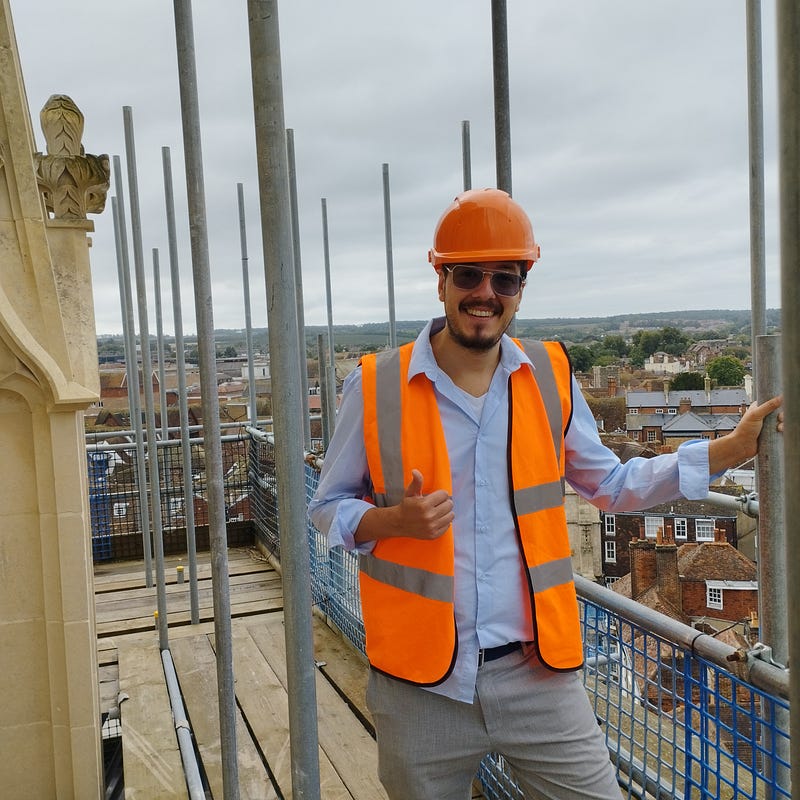
I hope you enjoyed this tour, if you have any questions, please don’t hesitate to contact me via email or the comment section below.
As usual, find some useful links below and don’t forget to clap, comment and subscribe!




